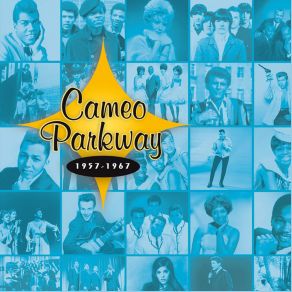Lonnie Youngblood
Wikimp3 information about the music of Lonnie Youngblood. On our website we have 11 albums and 16 collections of artist Lonnie Youngblood. You can find useful information and download songs of this artist. We also know that Lonnie Youngblood represents Soul genres.
Biography
[Edit]Saxman Lonnie Youngblood scored several R&B hits while recording steadily over the '60s and '70s, but is probably best remembered for hiring a young Jimi Hendrix and thus giving him the chance to play on one of his first professional sessions. Youngblood was born Lonnie Thomas in Augusta, GA, on August 3, 1941, and took up the saxophone after hearing his mother's favorite artist, Louis Jordan. He got his first professional gig backing singer Pearl Reeves in 1959, relocating to Newark, NJ; he made his first solo recording, "Heartbreak," not long after, and it became a regional hit. Youngblood struck out on his own and worked as a bandleader behind Faye "Atomic" Adams, Buster Brown, and Baby Washington before putting together his own group and playing colleges around the Northeast.
Youngblood served in the Army for a short time, and returned to Harlem in 1963, where he took over leadership of Curtis Knight's R&B band. The outfit included a talented young guitarist who called himself Jimmy James, but was born Jimi Hendrix. Later on in 1963, Youngblood took the band into the studio and recorded a total of 13 tracks (including alternate takes) with Hendrix on guitar. After Hendrix became a star, this material was bootlegged and repackaged countless times, without Youngblood's consent; in fact, some shadier companies even overdubbed anonymous fuzz-toned guitarists in order to make the material sound more like Hendrix.
Hendrix left Youngblood's band in early 1964, but the two remained friends up until Hendrix's death in 1970. Youngblood worked mostly as a backing musician during the rest of the '60s, playing on tours and/or sessions for the likes of James Brown, Jackie Wilson, Ben E. King, Sam & Dave, and other soul greats. He also continued to make his own recordings for small labels, generally in a style that echoed King Curtis or Junior Walker. But he really hit his stride in the '70s, when he recorded funkier workouts for the Turbo label (part of Joe and Sylvia Robinson's All Platinum/Stang family tree). He scored his biggest hit in 1972 with the grooving instrumental "Sweet Sweet Tootie," which climbed into the R&B Top 40; the accompanying LP of the same name also featured other single sides like "Super Cool" and "Black Is So Bad." Youngblood had a second R&B Top 40 hit with "Man and Woman" in early 1975. In 1977, Turbo issued a second Youngblood LP, this one eponymously titled; it was a far smoother, sweeter-sounding affair that made concessions to disco production techniques. His final chart single came in 1981 with "Best Way to Break a Habit."
In the years that followed, Youngblood sought treatment for the drug problems he'd developed during his musical heyday, and emerged clean and sober. He continued to play R&B at small venues around Harlem, including a regular gig at the soul-food restaurant Sylvia's, and also broadened his repertoire into blues and jazz to increase his marketability. Additionally, Youngblood recorded a gospel album, In the Garden, which saw a limited release on a small New Jersey label.
Title: Lonnie Youngblood's Bring My Baby Back
Artist: Lonnie Youngblood
Genre: Hip Hop/R&B, Soul, Gospel
Title: Lonnie Youngblood And The So-Called Jimi Hendrix Tapes
Artist: Lonnie Youngblood
Genre: Hip Hop/R&B, Blues Rock
Title: The Cameo and Fairmount Recordings 1965-1967
Artist: Lonnie Youngblood
Genre: Hip Hop/R&B, Soul
Collections
Title: Cameo Parkway 1957-1967 (Original Hit Recordings)
Genre: Pop
Title: Get In the Groove
Genre: Hip Hop/R&B, Soul
Title: Cameo Parkway 1957-1967 (CD4)
Genre: Hip Hop/R&B, Soul, Rock, Rock & Roll, Pop, Funk
Title: The Best Of Loma Records (CD2)
Genre: Hip Hop/R&B, Soul, Blues
Title: MOD The New Religion
Title: Pow City! Fabulous Shakers Soul Party
Genre: Hip Hop/R&B, Soul, Funk
Title: Forever Funky
Genre: Hip Hop/R&B, Funk
Title: Realside Records Presents: Soul On The Real Side # 6
Genre: Hip Hop/R&B, Soul, Funk
Title: Loma Originals 60's Soul
Genre: Hip Hop/R&B, Soul, Funk
Title: Rare & Soulful: The 60s
Genre: Hip Hop/R&B, Soul, Rock, Rock & Roll, Country, Funk, Classical
Title: Best Soul 2021
Genre: Hip Hop/R&B, Soul, Gospel, Funk, Classical, Easy Listening
Title: Rhythm & Soul 100 (CD2)
































